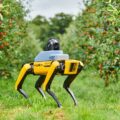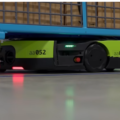Underwater robotics and oceanography: a journey into the deep blue
The ocean covers more than 70% of the Earth’s surface, yet it is one of the least explored environments on our planet. For centuries, humans have been fascinated by the mysteries of the deep sea, but it is only with the advent of underwater robotics that we can truly explore and understand the ocean. In this blog post, we will look at the role of underwater robotics in ocean exploration and how it has changed the way we look at and study the ocean.
What is underwater robotics?
Underwater robotics refers to the use of robots in the exploration and study of underwater environments. These can be submersible robots, autonomous underwater vehicles (AUVs), or remotely operated vehicles (ROVs). Underwater robots are equipped with various sensors and tools that enable them to perform tasks such as data acquisition, imaging, and measurements in the ocean. They can be controlled from the surface or be fully autonomous, allowing them to explore and study the ocean in ways that were previously impossible.
Advantages of underwater robotics
Using underwater robots to explore the oceans has several advantages. First, robots can explore areas that are too dangerous for humans, such as underwater trenches or heavily polluted areas. Second, the robots are able to operate in conditions that are not suitable for humans, such as extreme cold or high pressure. Third, the robots are capable of working continuously for long periods of time, providing valuable data and information about the marine environment. Finally, robots are able to explore areas that are too remote or too deep for humans, providing new knowledge and insight into the ocean.
Underwater Robotics in Ocean Exploration
The use of underwater robots in ocean exploration has revolutionized the way we study and understand the oceans. For example, underwater robots have allowed us to explore the Mariana Trench, the deepest part of the ocean, and discover new species of animals and plants. Autonomous underwater vehicles (AUVs) have been used to map the seafloor, leading to a better understanding of the ocean’s topography and geology. Remotely operated vehicles (ROVs) were used to study deep-sea corals and collect water and sediment samples.
Underwater robots have also been used to study the impact of human activities in the ocean. For example, they have been used to monitor oil spills and assess the impact of pollution on marine life. They have also been used to monitor ocean acidification, a phenomenon that occurs when the ocean absorbs carbon dioxide from the atmosphere and thus becomes more acidic. This is an important issue, as acidification can have a significant impact on the health of marine ecosystems and the animals that live in them.
The future of underwater robotics
The future of underwater robotics is bright, and we are likely to see further growth and innovation in this field in the coming years. For example, researchers are working on developing new and improved underwater robots that can explore the ocean at greater depths. These robots will be equipped with new sensors and tools that will enable them to perform a wider range of tasks, such as monitoring ocean currents and measuring water quality.
In conclusion, underwater robotics has revolutionized the way we explore and study the ocean. From deep-sea diving robots to autonomous underwater vehicles and remotely piloted vehicles, these underwater robots have provided us with new knowledge and insights into the ocean and have opened new frontiers in ocean exploration. The advantages of underwater robots are obvious: they can explore areas too dangerous for humans, work in conditions unsuitable for humans, and operate continuously for long periods of time. The future of underwater robotics is bright, and we are likely to continue to see growth and innovation in this field in the coming years. It is exciting to imagine the new discoveries and advances we will make in subsea robotics and ocean exploration as technology improves.








